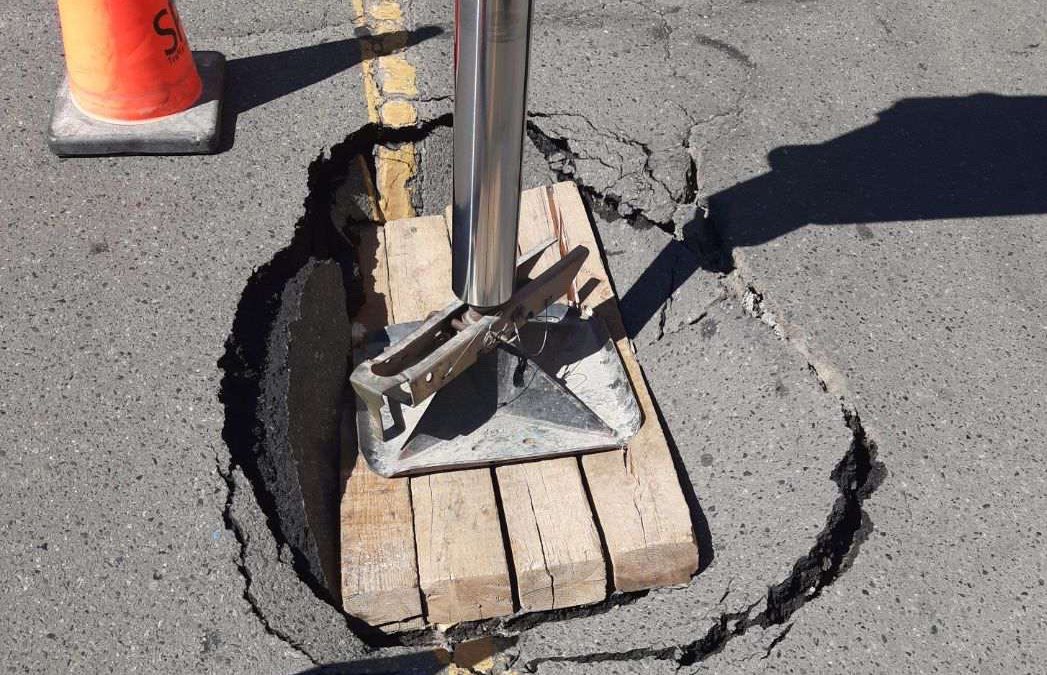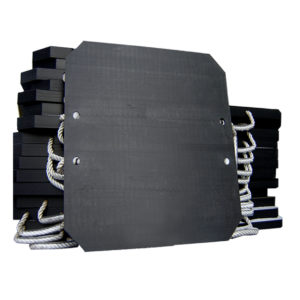One of our Business Development Managers recently visited a customer and saw a major outrigger pad failure on site. The picture he took at the end of this article leads to a discussion on several potential points of failure for outrigger pads:
- Incorrect float
- Incorrect design
- sub-optimal outrigger pad material
Firstly, the outrigger pad has an incorrect float meaning the dimensions of the pad versus size of the outrigger foot is clearly wrong. A general rule of thumb is the area of the outrigger pad needs to be 3x the area of the foot. This foot appears to be about 16″ x 16″ but is placed on a pad that appears to be only about 18″ x 36″. This means that too much pressure is being put on the ground – a larger float means the weight is distributed through a wider and more even area of the ground. Secondly, the outrigger pad design itself is wrong. Four wooden boards put together as the pad permits point load to be placed on one or two boards causing further uneven weight distribution. Thirdly, and most importantly, wood is a poor outrigger pad material. It bears, at maximum, 800 PSI but will rot, absorb water, and split as it clearly has in the picture.
Failure of this inexpensive but inappropriate material caused a point load which crushed even hardened asphalt. Redco Outrigger Pads made from UHMW or nylon bear incredible load (up to 3000 PSI) and can be made to an appropriate float size and design to properly spread load across the ground. They will last much longer than wood and will not fail like wooden pad designs would. Redco outrigger pads do not absorb water, rot, rust, support mold growth, or split like wood.
For more information on our Redco outrigger pads click here to go to our website’s outrigger pad section.


